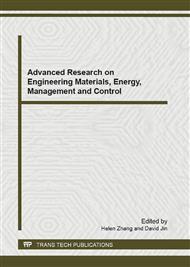p.861
p.865
p.871
p.876
p.881
p.885
p.890
p.894
p.900
A Design Proposal of Integrated PC-Architecture Embedded Control System for Remotely Operated Weapon Station
Abstract:
Modern warfare has led the concept of remotely operated weapon station for increasing force protection while maintaining lethality. There is a need for an efficient embedded control system for certain kind of system. A design proposal of an integrated PC-architecture embedded control system for remotely operated weapon station is presented. The hardware of the system is based on the 486DX2 processor running at 100MHz with coprocessor, which is a Pentium class platform. Hardware/software co-design methods and tools have been discussed after the system configuration is decided. The software design consideration for the control system has been presented according to multi-task programming of VxWorks
Info:
Periodical:
Pages:
881-884
Citation:
Online since:
January 2012
Authors:
Keywords:
Price:
Сopyright:
© 2012 Trans Tech Publications Ltd. All Rights Reserved
Share:
Citation:


